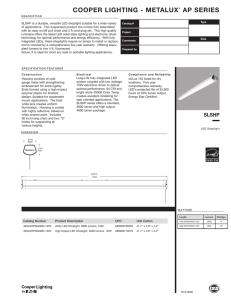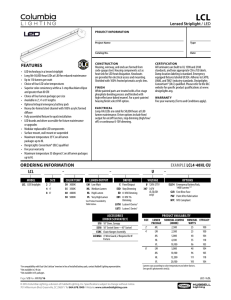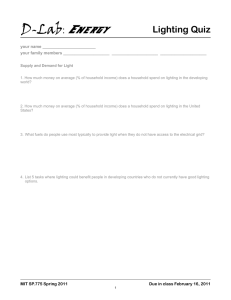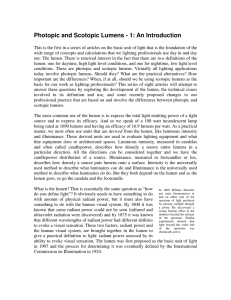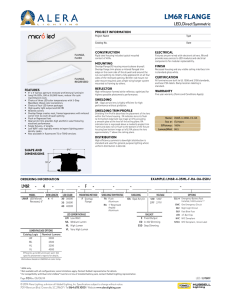EC70-2221 A Guide for Planning Residential Lighting: The Total
advertisement
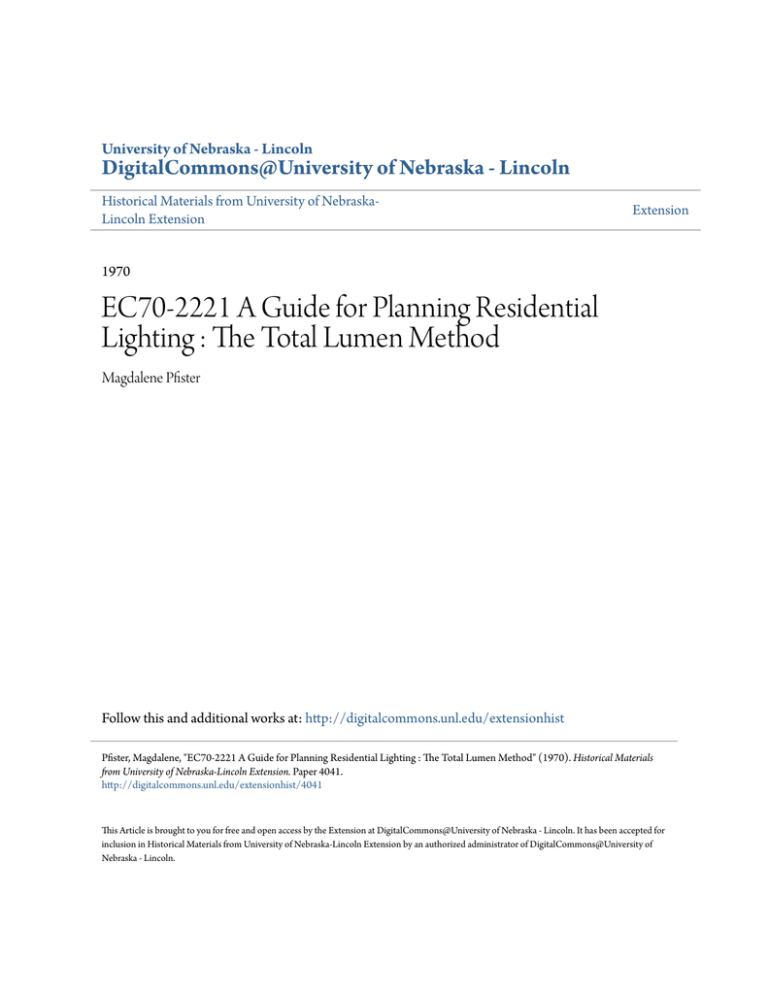
University of Nebraska - Lincoln DigitalCommons@University of Nebraska - Lincoln Historical Materials from University of NebraskaLincoln Extension Extension 1970 EC70-2221 A Guide for Planning Residential Lighting : The Total Lumen Method Magdalene Pfister Follow this and additional works at: http://digitalcommons.unl.edu/extensionhist Pfister, Magdalene, "EC70-2221 A Guide for Planning Residential Lighting : The Total Lumen Method" (1970). Historical Materials from University of Nebraska-Lincoln Extension. Paper 4041. http://digitalcommons.unl.edu/extensionhist/4041 This Article is brought to you for free and open access by the Extension at DigitalCommons@University of Nebraska - Lincoln. It has been accepted for inclusion in Historical Materials from University of Nebraska-Lincoln Extension by an authorized administrator of DigitalCommons@University of Nebraska - Lincoln. EC 70-2221 A GUIDE FOR PLANNING RESIDENTIAL LIGHTING The Total Lumen Method !/ .--.C. (_\.;j:v The amount of light generated by a bulb or tube at the light sourc~)~'t' called. a lumen. Taking the total light output into consideration is a helpful guide when design room lighting. The lumen count method assures one of the quantity of light. be successful, careful thought must also be given to the quality of lighting Room surfaces will affect the lumens needed. Light colors reflect light; dark colors absorb light. More lumens are needed in a room with dark walls or furnishings. The follovJing are recommended reflectance values: Ceiling 60 - 85%; walls 35 - 60%; floors 25 - 35% THE METHOD L Determine the total light required.. Multiply room area by lumen level recommended for the room (see data). (Length X width X lumens = total light. 2. Provide for general lighting from fixtures or from structural lighting such as valances, brackets or other. Figure lumens from each bulb or tube (see data). 3. Select lighting for areas and tasks. bulb or tube. 4. Total lumens lfl.ti~.; l. assures Lumens Req~ired L Room Dining Room Kitchen Bathroom Again figure lumens from each and #3 should be at least the amount in #1. ty Also check for quality of light. Per Square Foot (Recommended Hinimum) 80 45 80 65 Bedroom JJallway Laundry Work Bench 70 45 70 70 11 Adapted from material from General Electric by Magdalene Pfister, Extension Specialist, Home Furnishing. EXTENSION SERVICE, UNIVERSITY OF NEBRASKA COLLEGE OF AGRICULTURE AND HOME ECONOMICS AND U. S. DEPARTMENT OF AGRICULTURE COOPERATING E. F. FROLIK, DEAN J. L. ADAMS, DIRECTOR 2. Lumen Output INCANDESCENT Watts -60 75 100 150 200 30/70/100 50/100/150 30/200/230 100/200/300 l . umens 840 1150 1640 2700 3700 300/980/1200 610/1520/2130 270/3250/3520 1410/3250/4660 FLUORESCENT Diam. x Length 1 11 X 18" l}z" X 24" 1 11 X 36" l}z" X 36" l}z" X 4-8 11 Watts -15 20 30 30 40 Lumens 500 690 1200 1350 1840 SPOTS OR FLOODS Watts Lumens 30 200 75 750 150 1730 CHECK QUALITY OF LIGHT Quality depends upon: Placement of Equipment: - For use - functional, general and decorative accent lighting - for decorative balance. Shielding: - For visual comfort - to direct the light where needed, including both upward and downward distribution within an area. Control and Flexibility: -In the intensity of light, its direction and color; or in the adjustment of equipment position. Can it change the atmosphere, be functional, be bright, or be restful ••• meet needs and moods? I . ' Over-all Effect: - Can the eye see easily and quickly? Are there large areas of low brightness lighting on backgrounds, pools of focal light, interest and sparkle to please the eye? Housepower: - Be sure the home is wired for the job. DO YOUR FIGURING HERE
